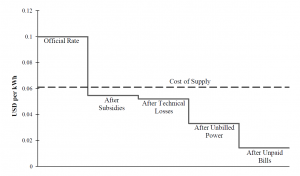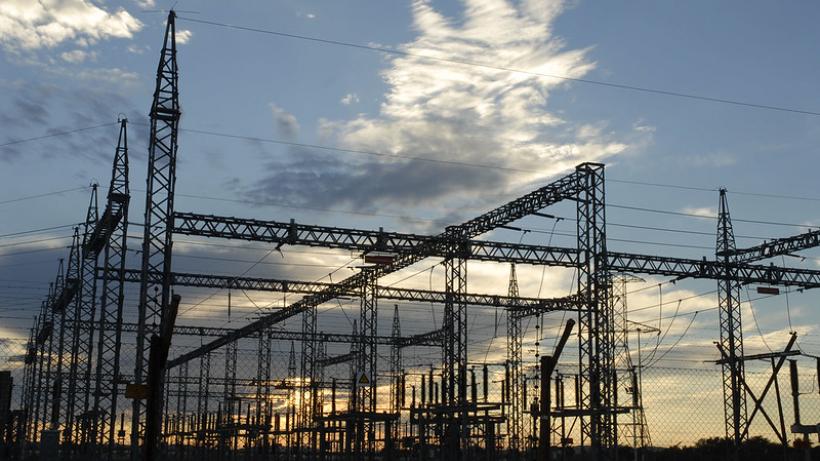Understanding of both the demand and supply side is crucial for ensuring the proper functioning of the electricity market and the provision of electricity.
Approximately one billion people, mainly located in South Asia and sub-Saharan Africa, do not have access to electricity in their homes. This limits productive activities at the household level (prime example being studying), which impedes poverty reduction and economic growth. Therefore, achieving universal access to affordable, reliable, sustainable and modern energy services by 2030 (UN Sustainable Development Goal 7) is a target that many developing countries have adopted to catalyse inclusive growth.
The energy market consists of a supply and demand side. Understanding both market forces is necessary to ensure policies enable a well-functioning market, especially in a developing country context. IGC’s Energy Research provides lessons and ideas, which shape the way we ought to consider the supply and demand phenomena for energy in developing countries.
Supply: The social norm of considering electricity a right, leads to losses, rationing of supply, and unmet demand for electricity
I was born in a ‘developed economy’. Having access to reliable electricity 24/7, 365 days in a year, is a social norm in the global north. Light to study in the evening after school or charge one’s phone to talk with colleagues is often taken for granted in this part of the world. Similar reliable energy supply does not exist consistently across the world. I experienced my first of many power cuts when I moved to East Africa. Neighbours and colleagues explained that the reason for the frequent power cuts were technical (i.e. issues with the grid). This came across as a plausible reason. However, it was only when I started working within the energy sector and seeing the data that I realised distributors were consistently making losses and the power cuts had a more complex cause.
Burgess et al. (2019) argue the social norm that electricity is a right generates losses, rationing, and unmet demand for electricity. The research explores rural Bihar, India (a state of 100 million people) where the team have access to extraordinary data based on IGC’s decade long work there. By electricity as a right, we are referring to the social norm that all deserve power regardless of payment. A well-intentioned ‘right to electricity’ often leads to provision of government subsidies to ensure electricity is affordable to all. However, figure 1 presents interesting results about the effect this has on the distributors’ revenue and cost levels in Bihar, India. The subsidy lowers the price from 0.1 USD per KWh to a level below the cost of supply, creating a loss for distributors. This loss is multiplied further when faced with technical losses, unbilled power, and unpaid bills.
Figure 1: Electricity losses in Bihar, India

A normal profit-making utility company can simply increase the price, extract consumer surplus, and raise profit. However, in a developing country context, where electricity is viewed as a right, this may stir protests and have mass political consequences. Therefore, increasing the price above the subsidised level becomes difficult. This implies that losses can be curtailed only by decreasing the quantity sold: hence the power cuts, which is a mechanism of rationing the electricity to reduce losses incurred by distributors.
Demand: A better understanding of how off-grid alternatives affect demand for electricity is necessary to achieve universal access
I recognise that my demand for electricity is very inelastic. I have a high willingness to pay and if the price was to increase, my demand is not likely to decrease by much. However, for people that have not experienced electricity as a daily necessity, perhaps their demand is more elastic than mine.
Burgess et al. (2019) explore the underlying view that rural households value electricity, are willing to pay for it and will benefit from improved access. The team explored this issue across 100 villages in Bihar, India to map the demand system for innovative off-grid solar technologies and government-led grid expansion. The results show that unelectrified households value off-grid solar; however, it is highly price elastic, reflecting the competitive nature of the market. The findings show that these innovative microgrid products are often a stopgap measure for unelectrified households, with a preference for the grid when it becomes available. Moreover, richer households have much stronger preferences for the grid over other electricity sources. These findings imply an opportunity for governments to consider all sources of electricity and demand preferences when formulating electrification policies.
The electricity landscape is rapidly changing, especially in a developing country context. Understanding the supply and demand-side dynamics better informs policy creation that enables a well-functioning electricity market. These ideas provide insight to guide policy decisions around levels of public investment, subsidisation and utilising innovative off grid products to achieve universal access to affordable, reliable, sustainable, and modern energy.
This blog is part of the IGC’s Ideas Matter campaign to celebrate the launch of the Little Book of Growth Ideas.
References
Burgess, R, M Greenstone, N Ryan and A Sudarshan (2019), “Electricity is not a right”, forthcoming, Journal of Economic Perspectives.
Burgess, R, M Greenstone, N Ryan and A Sudarshan (2019), “Demand for electricity in a poor economy”, Working Paper.


